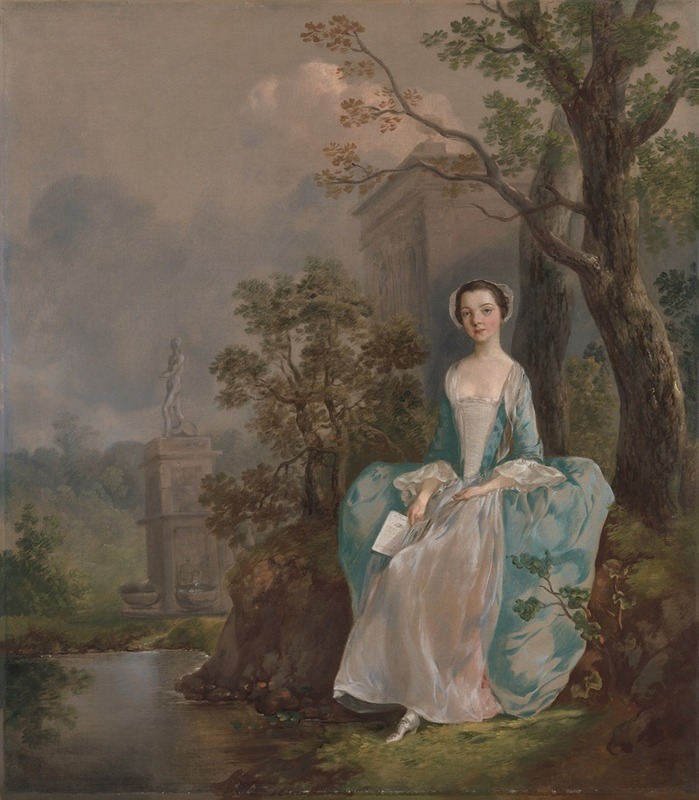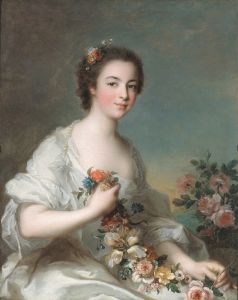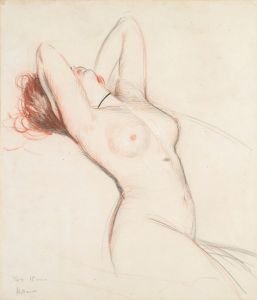
Portrait of a Woman
A hand-painted replica of Thomas Gainsborough’s masterpiece Portrait of a Woman, meticulously crafted by professional artists to capture the true essence of the original. Each piece is created with museum-quality canvas and rare mineral pigments, carefully painted by experienced artists with delicate brushstrokes and rich, layered colors to perfectly recreate the texture of the original artwork. Unlike machine-printed reproductions, this hand-painted version brings the painting to life, infused with the artist’s emotions and skill in every stroke. Whether for personal collection or home decoration, it instantly elevates the artistic atmosphere of any space.
Thomas Gainsborough, one of the most prominent British portrait and landscape painters of the 18th century, is renowned for his distinctive style and contribution to the art world. Among his numerous works, "Portrait of a Woman" stands out as a testament to his skill in capturing the elegance and character of his subjects. While specific details about this particular painting, such as the identity of the sitter or the exact date of creation, may not be well-documented, the work itself exemplifies Gainsborough's artistic approach and the broader context of his oeuvre.
Gainsborough was born in 1727 in Sudbury, Suffolk, and showed an early talent for drawing and painting. He moved to London in his teens to study art and soon began to establish himself as a portraitist. His career flourished as he gained the patronage of the English aristocracy, and he became a founding member of the Royal Academy in 1768. Gainsborough's style is characterized by his loose brushwork, delicate color palette, and ability to convey the textures of fabrics and the subtleties of human expression.
"Portrait of a Woman" reflects Gainsborough's mastery in portraying the grace and poise of his subjects. His portraits often feature sitters in fashionable attire, set against a backdrop that suggests both natural and interior settings. This painting likely follows that tradition, with the woman depicted in elegant clothing that highlights her social status and personal refinement. Gainsborough's use of light and shadow, along with his attention to detail in rendering the textures of skin and fabric, contribute to the lifelike quality of the portrait.
Gainsborough's portraits are not merely representations of physical appearance; they also capture the personality and mood of the sitter. His ability to imbue his subjects with a sense of individuality and presence is one of the reasons his work remains highly regarded. In "Portrait of a Woman," the sitter's expression and posture would have been carefully considered to convey her character and perhaps her relationship with the artist or the person who commissioned the work.
Throughout his career, Gainsborough was known for his preference for painting landscapes, often stating that he painted portraits for financial reasons but landscapes for pleasure. Despite this, his portraits are celebrated for their beauty and insight. "Portrait of a Woman" is a part of this legacy, showcasing his ability to blend the demands of portraiture with his artistic sensibilities.
While specific historical records about "Portrait of a Woman" may be limited, the painting remains an important example of Gainsborough's work and the broader trends in 18th-century British portraiture. His influence on subsequent generations of artists and his contribution to the development of portrait painting continue to be recognized and appreciated in the art world today.


















